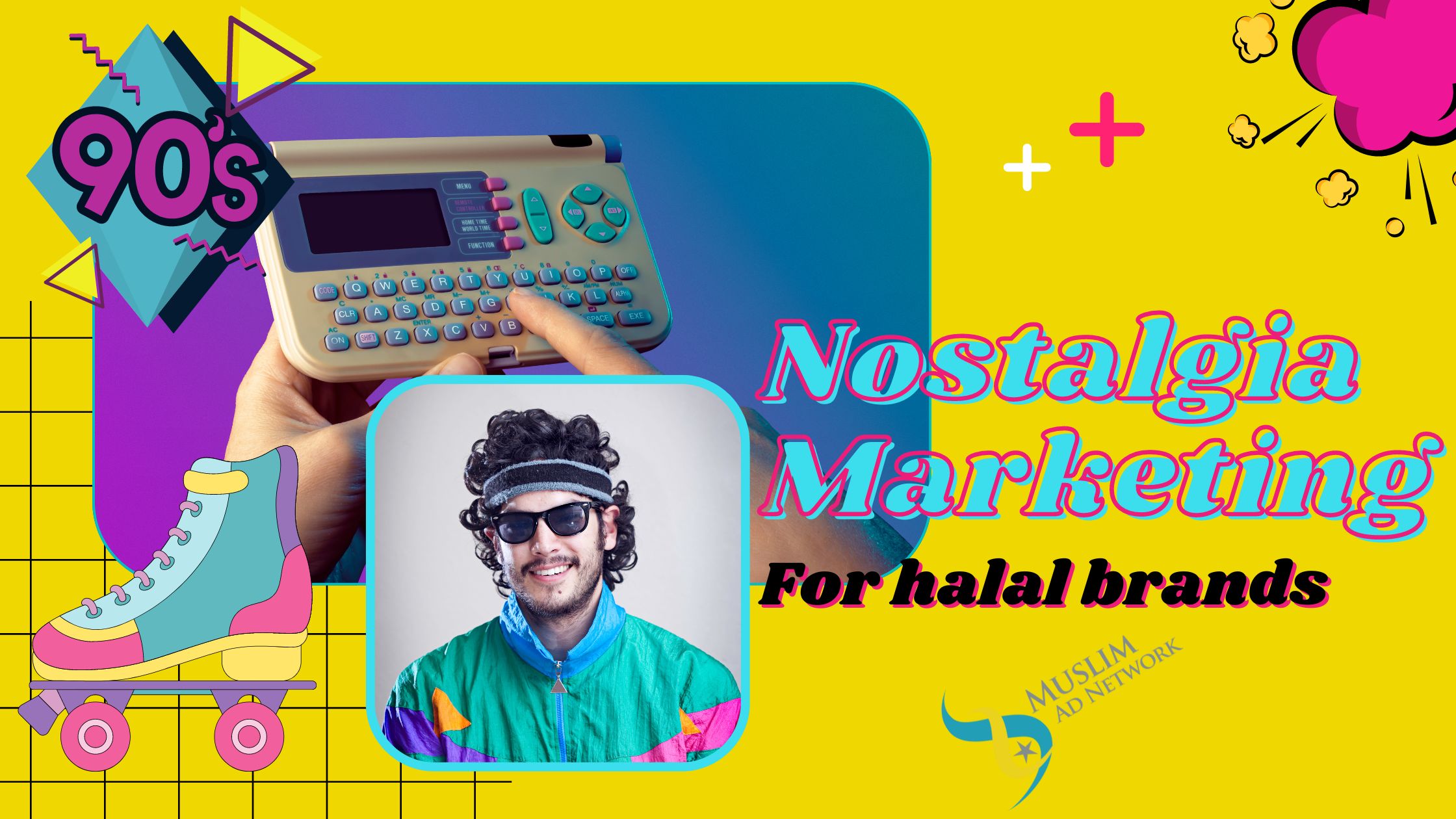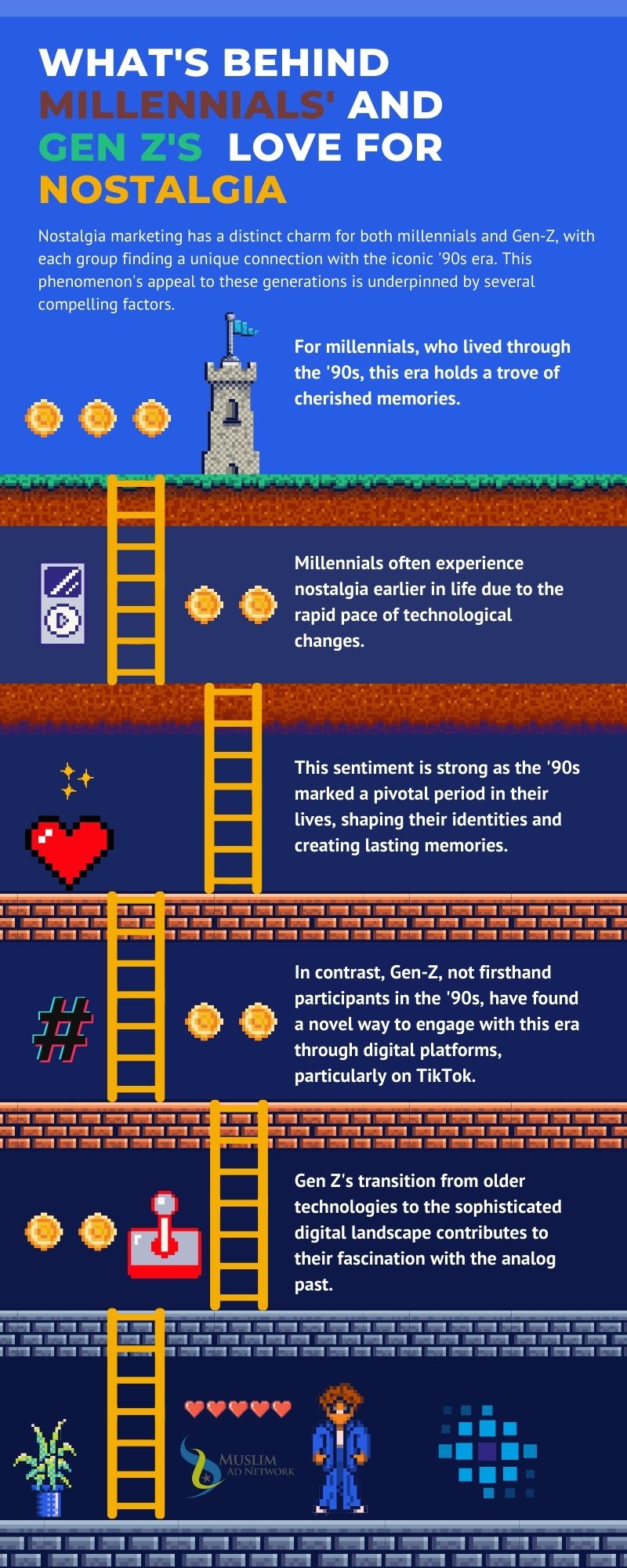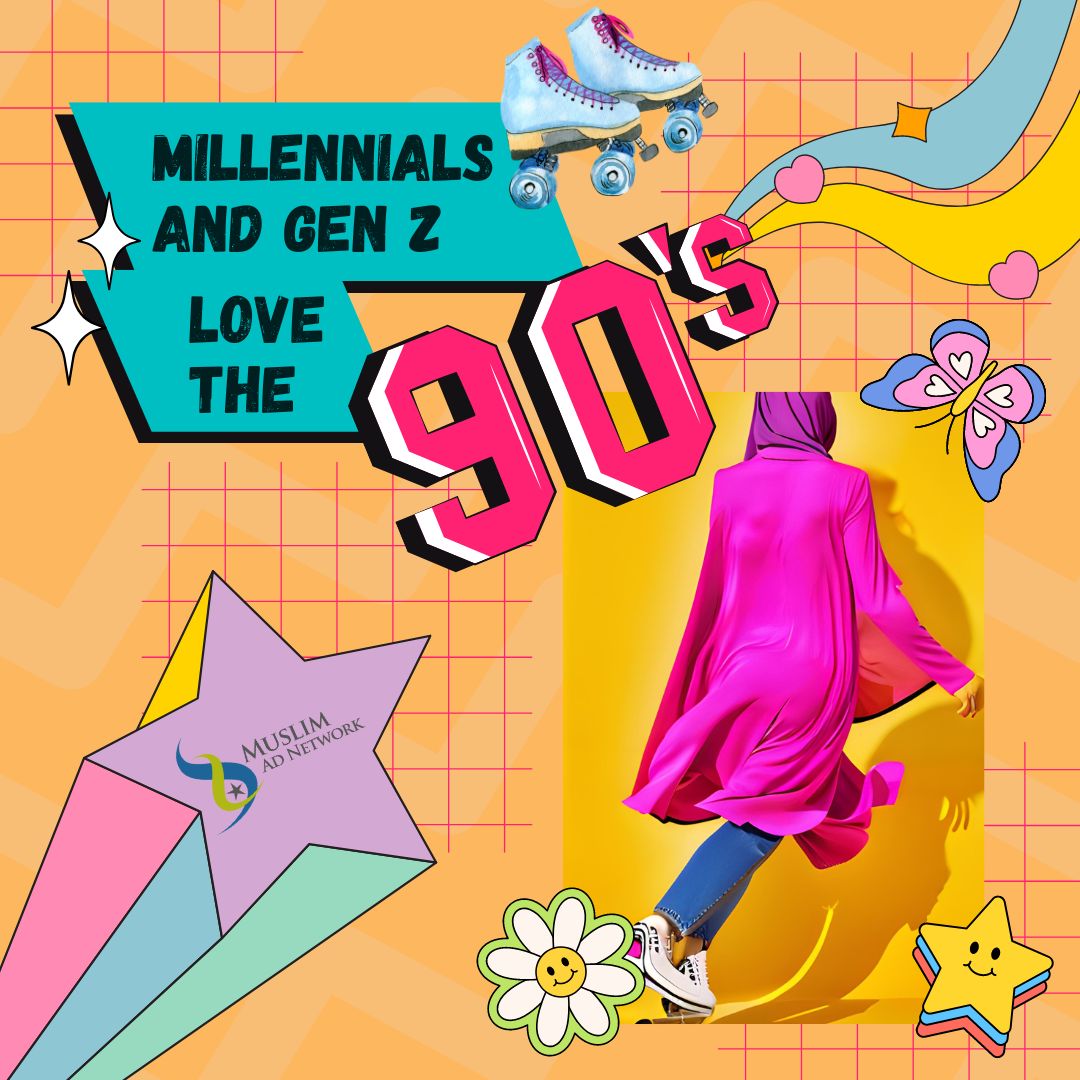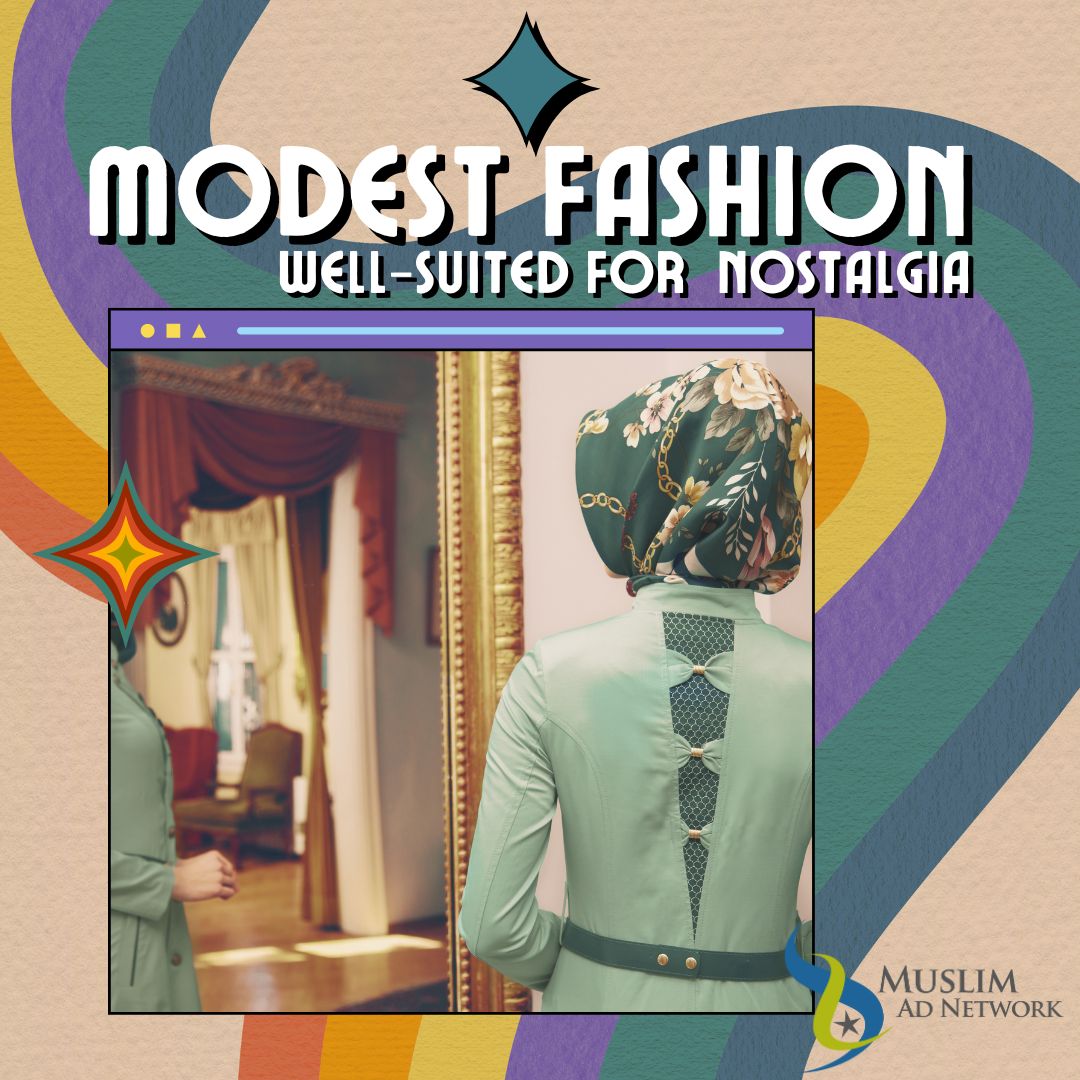
In the dynamic realm of marketing, an enchanting trend is taking center stage: Nostalgia Marketing. This ingenious approach can tap into the formidable force of nostalgia, captivating Muslim millennials and Gen-Z consumers who yearn for the past. By crafting campaigns that serve as time-travel machines, whisking Muslim audiences back to cherished eras, halal brands can achieve remarkable success in converting their target demographic. In this all-encompassing article, we will delve into the heart of nostalgia marketing, explore its profound impact on brand triumph, and showcase compelling examples that illuminate its effectiveness.
Understanding Nostalgia Marketing
Nostalgia is a strong feeling that everyone can relate to, no matter their age. It’s when you fondly remember things from the past, like memories and experiences that make you feel good. This feeling can bring up happy, but sometimes sad, emotions when you think about times that are special to you.
Nostalgic feelings can come from different things. They might be triggered by things you sense, like a familiar smell, a taste, or a sound that reminds you of something. For example, the smell of cookies might remind you of visits to your grandma’s house when you were a kid. Even talking to old friends or looking at things you used to love can make you feel nostalgic.
Nostalgia marketing is a clever way that companies play on these nostalgic feelings. They create campaigns that remind you of things from the past to make you feel a connection. Brands do this by including things in their advertising that people from different generations will recognize and relate to. They mix these old things with new ideas to make you feel comfortable and excited at the same time.
These campaigns aren’t just about remembering the past, they mix old and new things together in a way that makes sense for today. For example, your halal brand can decide to use things from the past that people like, such as family traditions or celebrations, and combine them with modern ideas that fit its products or services. This mix of familiar and new things can make Muslim audiences feel happy and interested, and it works for many people of different ages.
Nostalgia marketing is also about what people have in common. Even though everyone’s memories are different, the feelings connected to those memories are similar for everyone. By using nostalgia, brands can help people remember good times and feelings from the past, and this makes consumers trust and appreciate those brands more.
In simple words, nostalgia marketing is a way that brands use to remind people of the good times they had in the past. They do this to make people feel a strong connection to their products or services. This works because the things that made people happy in the past can still make them happy today.
Reaching the Right Audience

Nostalgia marketing has a distinct charm for both millennials and Gen-Z, with each group finding a unique connection with the iconic ’90s era. This phenomenon’s appeal to these generations is underpinned by several compelling factors.
For millennials, who lived through the ’90s, this era holds a trove of cherished memories. References to beloved TV shows, iconic toys like Tamagotchis, and even comfort foods like fish fingers, evoke a sense of familiarity and nostalgia. Millennials often experience nostalgia earlier in life due to the rapid pace of technological changes. This sentiment is strong as the ’90s marked a pivotal period in their lives, shaping their identities and creating lasting memories.

Moreover, millennials often grapple with adult responsibilities, such as work and finances. Nostalgia marketing provides an avenue for them to momentarily escape these pressures and journey back to a simpler, carefree time. The emotional resonance ignited by nostalgia marketing offers millennials comfort and a chance to relive the exuberance of their youth.
In contrast, Gen-Z, not first-hand participants of the ’90s, have found a novel way to engage with this era through digital platforms. Particularly on TikTok, a cultural melting pot, trends from the past are rejuvenated and celebrated. This generation, marked by digital fluency and a thirst for authenticity, perceives nostalgia marketing as a chance to connect with their own history and the pop culture that has significantly impacted their world.
Interestingly, technology’s rapid advancement has rendered the ’90s almost quaint and nostalgic for Gen-Z. Their transition from older technologies to the sophisticated digital landscape they now inhabit contributes to their fascination with the analog past. Consequently, Gen-Z places value on tactile and tangible experiences tied to the past, rendering them receptive to the sensory triggers often employed in nostalgia marketing.
A study by GWI revealed that 70% of Gen Z said they like listening to and watching media from earlier decades as it takes them to a time of more simplicity.

Source:GWI-”How are Gen Z and millennials driving nostalgia?”
Nostalgia marketing bridges the gap between these two generations by tapping into their mutual yearning for meaningful connections and simpler times. By referencing the ’90s, brands can evoke a sense of camaraderie and belonging among millennials, who experienced the era firsthand, and Gen-Z, who are eager to explore its cultural treasures. Through sensory cues, iconic references, and authentic emotions, a profound resonance is created, transcending generational boundaries and cultivating brand loyalty, all united by the thread of nostalgia.
Unveiling the Power of Nostalgia Marketing
Prominent brands such as Pepsi, Coca-Cola, and Nintendo have harnessed nostalgia marketing with exceptional finesse. Nintendo’s revival of the Nintendo Classic Mini, boasting an impressive 3.6 million global sales in 2018, stands as a testament to this triumph.
Many people who were kids in the ’80s and ’90s remember playing Nintendo games with their brothers and sisters. But if you grew up with siblings, you might also recall feeling sad as you grew older and didn’t spend as much time together. Nintendo featured a commercial that tells the story of two brothers who loved Nintendo when they were young. They stopped getting along as teenagers but found happiness in reuniting as adults to play the new Nintendo Switch games together.
Apple, renowned for its creative acumen, featured the endearing Cookie Monster from “Sesame Street,” for their iPhone 6’s commercial, invoking nostalgia while embracing accessibility. As the author of this article, on behalf of Muslim Ad Network, even I could not help but feel warmth when watching Cookie Monster performing his regular antics. The commercial released in March 2016 collected about 10 million views on YouTube.
Nostalgia ad campaigns like the ones mentioned above help bring people closer, make them feel emotions, and create loyalty to brands. Remember how people buy with emotion and not based on logic? Is there a more powerful way to ignite emotion than to remind people of fond, yet forgotten memories of childhood and teen years? In a world that’s always changing, nostalgia is like a steady and reassuring thread. It lets brands add realness and feelings to their messages, making a lasting place in people’s hearts.
The Driving Forces Behind Nostalgia Marketing’s Triumph
Beyond the yearning for days of old, nostalgia marketing thrives on several pivotal factors:
Emotional Marketing
Nostalgia, an emotion characterized by bittersweet sentiments, conjures gratitude for cherished memories. Emotional marketing, renowned for its persuasive prowess, fosters deep connections, drives conversions, and bolsters brand awareness.
Both good and bad feelings significantly impact how your consumers decide to buy your products and services. These emotions can even make some of your products popular with your customer base. Creating a strong connection between your halal brand and its customers through these emotions has several advantages:
Making Your Halal Brand More Valuable: Emotional marketing can help link your halal brand not only with one of your products but also with the feelings and experiences they have.
Getting Loyal Customers: Your halal brand must build solid and lasting relationships with its customers for continuity. Creating an emotional connection makes it more likely that your customers will keep engaging with your Muslim-friendly brand.
Standing Out: The market is very competitive, so it’s essential to be different from other brands. If you can make Muslim audiences connect with your brand with a particular emotion, it creates a special link that gives you an advantage over your competitors.
Brand Authenticity
The authenticity inherent in nostalgic brands, anchored in their historical symbols and imagery, nurtures trust among millennials and Gen Z, aligning seamlessly with their values.
We define authenticity as the sense that one is in alignment with one’s true self. This emphasis on felt authenticity reflects recent advances in the literature. Content analysis of nostalgic narratives finds that nostalgic reverie is self-oriented and revolves around personally meaningful memories. These narratives often follow a redemptive story arc such that negative experiences end with a positive conclusion. Thus, we propose that nostalgizing—by evoking personally important and formative past experiences—is associated with, and increases, felt authenticity.
Source: Journal of Experimental Social Psychology – “Nostalgia confers psychological wellbeing by increasing authenticity”
You’re intentionally eccentric yet unique blast-from-the-past ad campaigns give the impression of an authentic halal brand. In a world where messages are usually smooth and air-brushed, your nostalgic campaigns will stand out by just being there and saying something different.
If your halal brand uses an old-fashioned style, it shows that it doesn’t want to seem too serious. It will come over as friendly and easy to engage with.
Comfort and Security
Nostalgia acts as a special kind of safe haven, providing comfort, a feeling of security, and a deep sense of cherished love from earlier times. This emotional sanctuary becomes even more attractive and important during challenging periods, like the global COVID-19 pandemic.
When things are uncertain and difficult, people often find solace in memories that bring back positive emotions and a sense of familiarity from the past. Nostalgia allows us to reconnect with moments that made us happy and reminds us that there have been better times before, giving us a glimmer of hope and comfort in the midst of turmoil.
It’s like a warm blanket of memories that wraps around us, offering a sense of reassurance and a reminder that there are better days to come.
Incorporating Nostalgia into Halal Marketing: The Path to Triumph
As your halal brand hunts for an invincible marketing strategy, it can seamlessly infuse nostalgia into its Muslim ad campaigns. As Muslim millennials and Gen Z amplify their content creation endeavors, the allure of nostalgia marketing only intensifies. By interweaving fragments of the past into the present, your halal brand can forge an unbreakable connection with its Muslim audience, sparking emotions that resonate profoundly.
While nostalgia marketing promises a treasure trove of opportunities, it’s imperative to navigate potential pitfalls. Tailoring campaigns to specific generational segments is a paramount consideration, as what evokes nostalgia in one group might fall flat for another. Your halal ad campaigns must also steer clear of outdated stereotypes and offensive themes that were once deemed acceptable but are no longer tolerable in today’s diverse and evolving landscape.
In a year marred by isolation and uncertainty, individuals seek solace in the embrace of the familiar past. Studies indicate that over half of consumers turn to vintage TV shows, movies, and songs for comfort. Nostalgia emerges as an antidote to monotony, loneliness, and anxiety, offering brands the perfect vehicle to provide a sense of solace and connection.
Nostalgia is a strong force that makes people connect with your brand. To use the charm of nostalgia in marketing for your small business, try these strategies below:
Pick the Right Generation: Millennials and Gen Z have a profound hunger for reminiscing about the past. Capitalize on this sentiment by tailoring your campaigns to resonate with their memories.
Keep it Balanced: Strike a balance between retro elements and modern branding. Modernizing logos or using established dates to highlight your company’s history can infuse authenticity into your campaigns.
Get the Details Right: Authenticity is key. Respectfully handle memories by avoiding careless alterations that might lead to skepticism. Maintain a delicate balance between homage and originality.
Take Advantage of The Trickle Down: Even if your target audience didn’t directly experience a specific era, they might still appreciate themes and styles from that time. Tap into the trickle-down effect of cultural elements.
Don’t Get Stuck in One Era: While the ’90s may be in vogue now, anticipate shifts towards early 2000s nostalgia. Keep an eye on evolving trends to stay ahead of the curve.
Don’t Overdo It: Moderation is key. Strive for a balanced narrative that intertwines reminiscence with relevance, anchoring your brand’s place in today’s market.
Decide If It Works for You: Certain industries, like consumer packaged goods, food and beverage, fashion, beauty, and even forward-thinking technology brands, are well-suited to harness the power of nostalgia. Make sure the industry you are in is suitable before creating nostalgia ad campaigns.

Nostalgia isn’t just a passing trend; it’s a creative force that resonates deeply with consumers. By crafting authentic and balanced campaigns that blend the allure of the past with the innovation of the present, your small business can harness the power of 90s nostalgia marketing to forge genuine connections and boost brand recognition. Remember, what’s old is new again, and nostalgia is a creative trend that’s here to stay.
Nostalgia marketing stands as a bridge linking the past and the present, invoking potent emotions and nurturing meaningful connections. As the world hurtles forward, nostalgia marketing remains a timeless and potent strategy, inviting audiences to embark on a magical journey where cherished memories of yesteryears seamlessly intertwine with the vibrant realities of today.
In Conclusion: Riding the Nostalgia Wave
Throughout this comprehensive article, we’ve explored the heart of nostalgia marketing, delved into its profound impact on brand success, and highlighted compelling examples that showcase its impressive effectiveness. We’ve uncovered how nostalgia marketing is not just about remembering the past; it’s about creating meaningful connections, building brand authenticity, and providing comfort and security during challenging times.
We’ve witnessed how nostalgia marketing appeals to both millennials and Gen-Z, evoking cherished memories and creating a bridge between generations. The emotional connection and authenticity it offers are the driving forces behind its triumph. The fusion of the past with the present has become an art, creating campaigns that resonate deeply with audiences and forge lasting brand loyalty.
We’ve taken a closer look at some prominent brands that have mastered nostalgia marketing, using it to build emotional connections, ignite powerful emotions, and foster loyalty. It’s clear that nostalgia marketing holds the potential to bring people closer, evoke emotions, and create lasting bonds with brands.
As we’ve ventured into the world of nostalgia marketing, we’ve uncovered strategies that halal brands can use to infuse nostalgia into their campaigns effectively. We’ve seen the importance of balance, authenticity, and a keen understanding of the target audience’s preferences.
In conclusion, nostalgia marketing is not just a passing trend; it’s a creative force that resonates deeply with consumers. By skillfully blending the allure of the past with the innovation of the present, halal brands can create genuine connections, boost brand recognition, and stand out in a crowded marketplace. Nostalgia marketing is more than a marketing strategy; it’s a bridge that connects eras, emotions, and generations, making it a timeless and potent approach that continues to captivate audiences as we journey through time.
start targeting muslim consumers